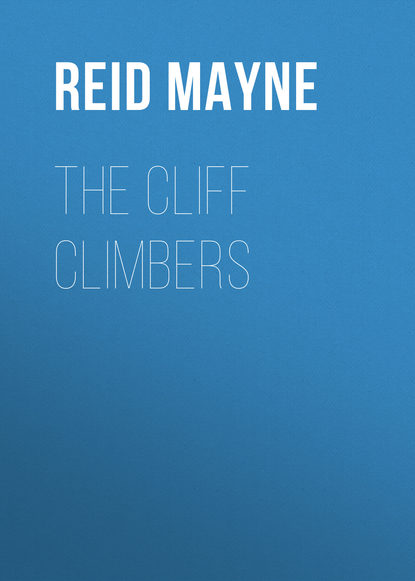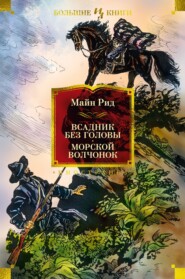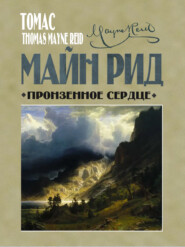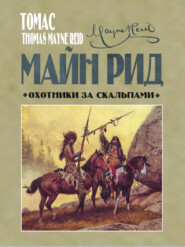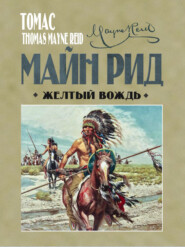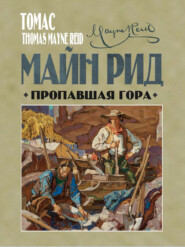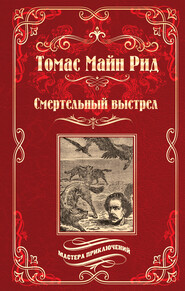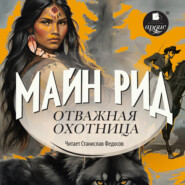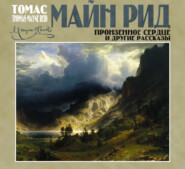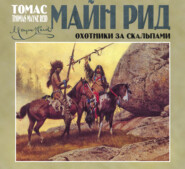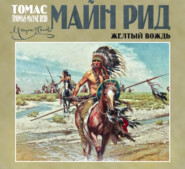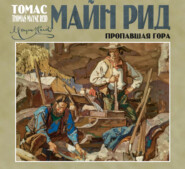По всем вопросам обращайтесь на: info@litportal.ru
(©) 2003-2024.
✖
The Cliff Climbers
Настройки чтения
Размер шрифта
Высота строк
Поля
The knife-blades of all three were called into requisition; and in an incredibly short space of time, some scores of the little trees were stripped of their bark – from their roots up to the lower branches. The trees themselves were not cut down; as that was not necessary. They could be peeled more readily, as they stood; and for this reason they were left standing.
Up to the hour of sunset did these “cascarilleros” work – with only a few minutes of interruption, while they went back to the hut, and ate a hurried luncheon of ibex-meat – and just as the sun was sinking behind the summit of the great Chumulari, they might have been seen trudging homeward – each bearing a heavy bundle of bark, with Fritz following gleefully at their heels.
The thicket from which they had taken their departure, gave evidence of the industry with which they had been working all day long. Over a space, of nearly half an acre in extent, the trees were seen standing, each with its tiny trunk completely divested of bark: as if a whole gang of goats had been browsing upon them!
On reaching the hovel, our bark-gatherers did not desist from their labour. They only entered upon a new branch of industry: by becoming paper manufacturers.
It was after night; and they had to work by the light of their torches of cheel-pine, already prepared. But as these burnt with a clear steady flame, they served quite as well as candles would have done.
The first process in the paper-making did not require much nicety in its execution; and, moreover, it could be performed as well inside the hut as in the largest room of a paper-mill. All they had to do was to pick the bark to shreds. This occupied them the whole evening – during which there was much conversation of a cheerful kind, with a joke or two about oakum-picking in a prison; and of this, not only the task in which they were engaged, but the situation in which they were executing it, did not fail to remind them.
When they had finished, they ate their frugal supper and retired to rest – full of the idea of continuing the paper manufacture in the morning.
When morning came, they had not much to do: for the next process was one which required the exercise of patience rather than of labour.
When the bark of the daphne has been thoroughly picked to pieces, it is put into a large pot or cauldron filled with water. A lixivium of wood-ashes is then thrown in along with it; and it is suffered to boil for several hours.
As our manufacturers were without pot or cauldron of any kind, there would have been here an interruption of an insurmountable kind: had it not been that they had plenty of water already on the boil, and perpetually boiling – in the hot-spring near the hut.
Apparently all they should have to do would be, to immerse the prepared bark in the spring, and there leave it for a proper length of time. But then the water, where it was hottest, was constantly in motion – bubbling up and running off; so that not only would the strings of bark be carried away, but the ashes would be separated from the mass, and consequently of no service in aiding to macerate it.
How was this difficulty to be got over? Easily enough. They had not proceeded thus far without thinking of a plan; and this plan was, to place the bark along with the ashes in one of the large yâk-skins still in good preservation, and after making it up into a sort of bundle – like clothes intended for the laundry – to plunge the skin and its contents into the spring, and there leave them – until the boiling water should perform its part. By this ingenious contrivance, did they get over the difficulty, of not being provided with a not.
When Karl thought that the bark was sufficiently boiled, it was taken out of the water, and also out of its yâk-skin wrapper. It was then placed, in mass, upon a flat rock near by – where it was left to drip and get dry.
During the time that it was in the water – and also while it was dripping and drying on the rock – none of them were idle. Caspar was engaged in fashioning a stout wooden mallet – a tool which would be needed in some after operations – while Ossaroo was equally busy upon an article of a very different kind. This was a sort of sieve made of thin splints of cane, set in a frame of thicker pieces of the same cane – ringall bamboo.
Ossaroo had undertaken this special task: as none of the others knew so well, how to fashion the bamboo into any required utensil; and although he was now making something altogether new to him, yet, working under the direction of Karl, he succeeded in making a sieve that was likely to serve the purpose for which plant-hunter designed it. That purpose will presently be spoken of.
As soon as the fibre was nearly dry, the mallet was brought into requisition; and with this the mass was pounded upon the flat surface of the rock – until it became reduced to a complete state of “pulp.”
This pulp was once more put into the yâk-skin – which had been gathered up around the edges so as to form a sort of concavity or rude vat – and again immersed under water – not of the boiling spring, but the cool water of the lake – until the bag became full. The pulp was next stirred with a stick – which brought the coarse dirty parts to the surface. These were skimmed off, and thrown away as refuse; and the process was repeated with fresh water – until the whole substance, which was of a mucilaginous character, was rendered pure, and soft to the touch. The next and last operation was in fact the making of the paper; and was performed by Karl himself. It was simple enough, though requiring a certain dexterity, or sleight of hand, to do it well. It consisted in placing a quantity of the pulp upon the sieve before mentioned; and cradling the frame about – all the time held under water – until the substance became equally and uniformly spread over the whole surface. The sieve was then taken out of the water – being raised gently and kept in a horizontal position – so as not to derange the even stratum of pulp that severed it. This done, nothing more remained but to place the frame across a pair of bars, and leave the pulp to get drained and eventually become dry. When dry, it would be paper!
Of course, with one sieve, the whole quantity required could not be made at a single cast; but, as soon as one sheet became sufficiently dry to be taken off the frame, the sieve was again repulped; and so on, till the whole of the boiled bark was converted into paper; and they found themselves in possession of a sufficient number of broad sheets to make a kite as big as a coach-house-door.
In consequence of their having to wait for the drying of each sheet, the process occupied them for several days; but during this time they had not been either idle or inactive. Karl and Caspar had been hard at work, in getting up the “bones” of the kite; while Ossaroo had undertaken to fabricate the tail.
The rope with which it was to be “flyed,” occupied more time, and required more care, than any other portion of their work. Every strand had to be twisted with the greatest exactness; and almost every fibre tested, as to its strength and fitness. Could they have used a rope of stouter build, it would not have been necessary to be so particular; but a thick rope would have been too heavy for the kite to carry – just as it had been too heavy for the strength of the eagle. A slender cord, therefore, like that they were obliged to make, required to be faultless – else the life of some one of them might be sacrificed while attempting the ascent.
With a foreknowledge of this, it is hardly necessary to say that Ossaroo did his best in the manufacture of that rope – every strand of it being twisted between his index finger and his thumb, as smoothly and evenly as if he had been spinning it for a fishing-line.
The framework of the kite was made out of split culms of the ringall bamboo; which, on account of its strength, elasticity, and lightness, was far superior for the purpose to any species of exogenous wood; while the glue for laying on the paper was procured from the root of an arum – grated, and then boiled into a glutinous starch.
In about a week after the notion of a kite had been “hatched” in the brain of Caspar, the bird itself might have been seen outside the door of the hut – full-fledged and ready for flight!
Chapter Forty Four.
Flying the kite
The kite having been thus prepared, they only waited for an opportunity of flying it – for a day when the wind should be sufficiently strong, and blowing from the right quarter – that is, towards that portion of the precipice over which it appeared best that the paper-bird should be dispatched. This was the same place, where the ladders had been set, and where they had unsuccessfully endeavoured to send up the bearcoot.
They had already ascended one of the isolated cairns of rock, that stood within the valley nearly opposite this part of the cliff; and from its top they had been able to get a view – though not a very good one – of a portion of the sloping declivity of the mountain above. It appeared to be covered with snow – here and there supporting huge masses of something, either boulders of rock, or dark-coloured lumps of ice. The eyes of our adventurers rested on these with the greatest interest: as they had done upon a former occasion, when about to send the bearcoot among them. Now they had conceived higher hopes than ever – founded upon the presence of these masses. If they should succeed in flying the kite into their midst, and there dropping it, it was not only possible, but highly probable, that it might either get the rope warped around one of them, or itself become caught between two, so as to hold fast. To render this the more practicable, they had furnished its wings with spurs – in other words, they had left the cross-piece of bamboo to extend on each side about a foot beyond the edge of the paper; and near the end of each extension, they had placed other pieces transversely, and lashed them firmly – so that they might act as the flukes of an anchor.
They had spared neither pains nor ingenuity to ensure success. They had done all, that man could do, to deserve it.
Fortune was so far favourable, as not to keep them long in suspense. Only two or three days had passed, when one came, on which the wind blew in their favour – exactly as they wanted it. It was a stiff breeze, steady in the right direction, and strong enough to carry up the largest of paper kites.
Proceeding to the place, where the ladders were set, with the huge bird carried in the arms of Ossaroo, they made ready for its flight. Karl was to start the kite, and guide its ascent from the ground; while Caspar and the shikaree were to run out with the rope: as it would require the united strength of both to hold such a broad-breasted bird against the wind. They had taken the precaution to cut away the bushes to a long distance backwards from the cliff, and so clear the track: there was therefore nothing to impede them while paying out the string.
It was arranged that Karl should have direction of the movement, and give out the signal for them to start.
It was a moment of vivid emotion, as each of he three placed himself in the position assigned to him – Karl by the kite, with its backbone in one hand, and its tail in the other – Ossaroo clutching the rope – and Caspar by his side, holding the great coil in readiness for delivery.
Karl poised the creature upon the stump of its tail; and then, lifting with all his strength – so as to raise it several feet from the ground – he gave forth the signal at the highest pitch of his voice.
At the same instant, Caspar and the shikaree ran backward – tightening the rope as they went; and like a vast vulture with outspread wings, the bird soared silently upward into the air.
It rose with a regular majestic motion, soon overtopping the trees that grew near, and still mounting on towards the summit of the cliff.
Karl cheered as he saw it ascend. The others were too busy in the performance of their parts to find time for this expression of triumph; and not until the kite had soared high into the heavens, and appeared many yards above the brow of the beetling precipice, did Caspar and Ossaroo respond to the cheering of Karl. Then both together gave vent to their excited feelings in a long-continued hurrah!
“Let go now, Ossaroo!” cried Karl, shouting so as to be heard above the wind. “You, Caspar, keep hold of the end of the cord.”
Ossaroo, obedient to the order, suddenly slackened his hold – at the same time springing towards Caspar, and prudently seizing the end along with him.
The kite, thus released, like some huge bird that had received its death-wound, turned head downwards towards the earth; and, after making various sinuous evolutions through the air, flouting its long tail first in one direction then in another – it was seen darting down towards the acclivity of the mountain. At length, passing behind the summit of the cliffs, it was no longer visible to the eyes of those who had aided it in its lofty flight, and then left it helplessly to fall.
So far they had succeeded to the utmost of their expectations. The kite had alighted, just where they wanted it.
But now arose the question – would it stay there? In other words, would it be caught among the rocks, and hold fast?
If not, they would have to fly it again and again, until it should get fastened above, or until the experiment should prove a failure.
Karl stepped forward to decide the point – the others looking on with an eagerness of glance, that betrayed how deep was their interest in the result.
Karl’s hand trembled as he laid hold of the cord. At first he pulled upon it in a gentle way – hand over hand – so as merely to take in the slack.
At length it began to tighten, requiring greater strength to take it in: as if the kite was still free, and dragging over the snow.
This produced anything but a pleasant anticipation; and as the rope came to hand, foot after foot, and yard after yard, a shadow, that had stolen over the countenances of all three, became sensibly darker.
Only for a short while did this shadow remain. It vanished, more suddenly than it had arisen: when they saw the running cord become abruptly checked, and then tighten as Karl continued to draw it in. He pulled upon it, at first exerting only a part of his strength, as if afraid that it might again come loose. After awhile, gaining confidence, he pulled with all his power. It still held fast!
Ossaroo and Caspar now joined their strength to his; and all three pulled together.
Hurrah! the kite would not come! The cord kept its place, stretching to the bottom of the cliff, as taut as the main-stay of a ship!
Ejaculations of joy escaped from all three at the same instant of time: and for some moments they stood, tightly clutching the rope, and holding it firmly: as if in dread of its being dragged out of their grasp by some hostile and invisible hand.





